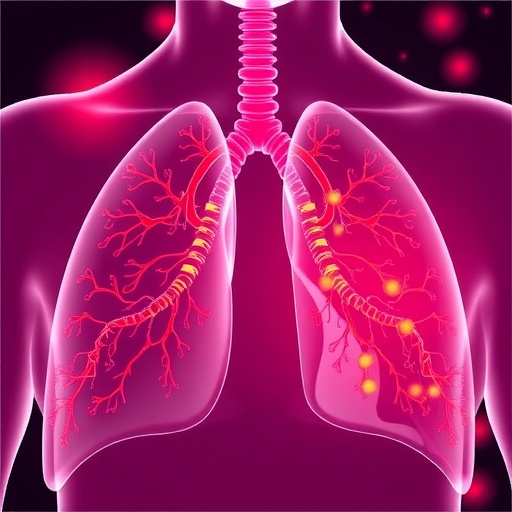In an era where precision medicine is rapidly evolving, the quest for reliable biomarkers that can predict cancer progression and patient outcomes remains paramount. Recent advances in molecular oncology have spotlighted circular RNAs (circRNAs) as pivotal regulatory molecules in tumor biology. Among these, circPVT1 has garnered increasing interest due to its unique role in modulating oncogenic pathways and its potential as a prognostic biomarker across various solid malignancies. A comprehensive meta-analysis recently published in Exploratory Research and Hypothesis in Medicine sheds new light on the clinical significance of circPVT1, underscoring its association with poor overall survival and aggressive tumor characteristics.
CircRNAs are a class of endogenous non-coding RNAs characterized by covalently closed loop structures, making them resistant to exonuclease degradation and highly stable within cells. This distinctive stability has positioned circRNAs as promising diagnostic and therapeutic targets in oncology. CircPVT1, derived from the PVT1 gene locus known for its oncogenic activities, is implicated in the regulation of cell proliferation, apoptosis, and metastasis through diverse molecular interactions, including acting as a microRNA sponge and modulating gene expression frameworks.
The meta-analysis aggregated data from 27 clinical studies involving over two thousand patients diagnosed with solid tumors, encompassing malignancies such as lung cancer, osteosarcoma, hepatocellular carcinoma, colorectal cancer, and papillary thyroid carcinoma. Utilizing advanced statistical modeling through STATA 12.0, the pooled hazard ratios indicated a significant correlation between elevated circPVT1 expression and decreased overall survival (OS), with a hazard ratio of 1.68. Particularly striking was the strong association in lung cancer, where high circPVT1 expression more than doubled the risk of mortality.
This prognostic relevance extends beyond survival outcomes. The analysis revealed that circPVT1 overexpression correlates with key clinicopathological parameters indicative of tumor advancement. Patients exhibiting high circPVT1 levels were more likely to present with larger primary tumors, heightened lymphatic involvement, distant metastases, and advanced tumor-node-metastasis (TNM) staging. The odds ratios ranged from 1.36 for increased tumor size to 1.84 for advanced staging, emphasizing the molecular marker’s role in reflecting tumor aggressiveness.
The stability and abundant expression of circPVT1 in tumor tissues, coupled with its detectability in bodily fluids, also render it amenable to non-invasive diagnostic assays. Liquid biopsy technologies leveraging circPVT1 quantification could enhance early cancer detection and monitor therapeutic responses, offering clinicians a dynamic tool in personalized oncology. However, the meta-analysis authors caution that, while promising, these applications require rigorous validation in prospective, multicenter clinical trials to confirm reproducibility and clinical utility.
The study’s comprehensive approach, integrating data across multiple cancer types and diverse populations, strengthens the generalizability of circPVT1’s prognostic value. Nonetheless, heterogeneity in study designs, detection methodologies for circPVT1 expression, and patient cohorts remain potential confounding factors. Harmonization of analytical protocols and standardization of circPVT1 measurement techniques will be crucial to translating these findings into routine clinical practice.
From a therapeutic standpoint, targeting circPVT1 or its downstream effectors represents a novel frontier. RNA interference strategies or CRISPR-based approaches designed to diminish circPVT1 levels could disrupt oncogenic cascades, thereby inhibiting tumor growth and metastasis. Furthermore, elucidating the molecular interactome of circPVT1 may unveil additional druggable targets, fostering the development of combination therapies that circumvent resistance mechanisms.
Future investigations should prioritize large-scale, prospective studies that integrate multi-omics data to delineate the context-dependent functions of circPVT1 across diverse tumor microenvironments. Incorporating patient-derived xenograft models and single-cell transcriptomics may further clarify the temporal dynamics of circPVT1-mediated oncogenesis. Such comprehensive efforts will be instrumental in harnessing the full potential of circPVT1 to revolutionize cancer diagnostics and therapy.
In summary, the emerging evidence positions circPVT1 as a cornerstone biomolecule at the intersection of tumor biology and clinical oncology. Its overexpression serves as a harbinger of poor prognosis and advanced disease, while its mechanistic versatility offers multiple avenues for therapeutic innovation. The integration of circPVT1-focused strategies into the current oncological paradigm holds promise for enhancing survival outcomes and ushering in a new era of precision medicine.
Subject of Research: prognostic significance and clinicopathological correlations of circPVT1 in solid tumors
Article Title: Prognostic and Clinicopathological Significance of circPVT1 in Solid Tumors: A Systematic Review and Meta-analysis
News Publication Date: May 9, 2025
Web References: http://dx.doi.org/10.14218/ERHM.2024.00042
Keywords: Solid tumors, circPVT1, prognostic biomarker, overall survival, cancer metastasis, tumor size, lymph node metastasis, tumor-node-metastasis stage, circular RNA, oncogenesis
Tags: cancer progression predictive biomarkerscircPVT1 and patient outcomescircPVT1 as a prognostic biomarkercircular RNAs in cancer researchclinicopathological significance of circPVT1meta-analysis of solid tumorsmolecular oncology advancementsoncogenic pathways and circPVT1regulatory roles of circPVT1 in tumorssolid malignancies and circPVT1stability of circular RNAs in diagnosticstumor biology and circRNAs





